10 Great Resources for Seasonal Foraging
Foraging has seen a remarkable resurgence in popularity as you and many others seek to reconnect with nature and uncover the treasures that lie just beyond your doorstep, including various wild plants and seasonal foraging opportunities.
With a wealth of resources at your disposal from local foraging groups to cutting-edge apps exploring seasonal edibles such as Dandelion, Chickweed, and Nettles has never been easier.
This article will guide you through ten exceptional tools and communities designed to enhance your foraging journey while addressing the essential aspects of benefits, safety guidelines, and sustainability inherent in this timeless practice.
Whether you re a curious novice eager to learn about herbalism or a seasoned forager, you ll find something here tailored just for you.
Contents
- Key Takeaways:
- 1. Local Foraging Groups and Clubs
- 2. Foraging Apps and Websites
- 3. Local Farmers’ Markets
- 4. Wild Edibles Field Guides
- 5. Social Media Groups and Pages
- 6. Community Gardens
- 7. Nature Centers and Parks
- 8. Cooking Classes and Workshops
- 9. Foraging Tours and Retreats
- 10. Local Environmental Organizations
- What is Foraging and Why is it Gaining Popularity?
- Frequently Asked Questions
- 1. What are the benefits of seasonal foraging?
- 2. Where can I find information about foraging laws and regulations?
- 3. Are there any safety precautions to keep in mind when foraging?
- 4. Can I forage in my backyard or do I need to go to a forest or park?
- 5. How can I learn more about foraging?
- 6. What are some good resources for identifying plants and mushrooms?
Key Takeaways:
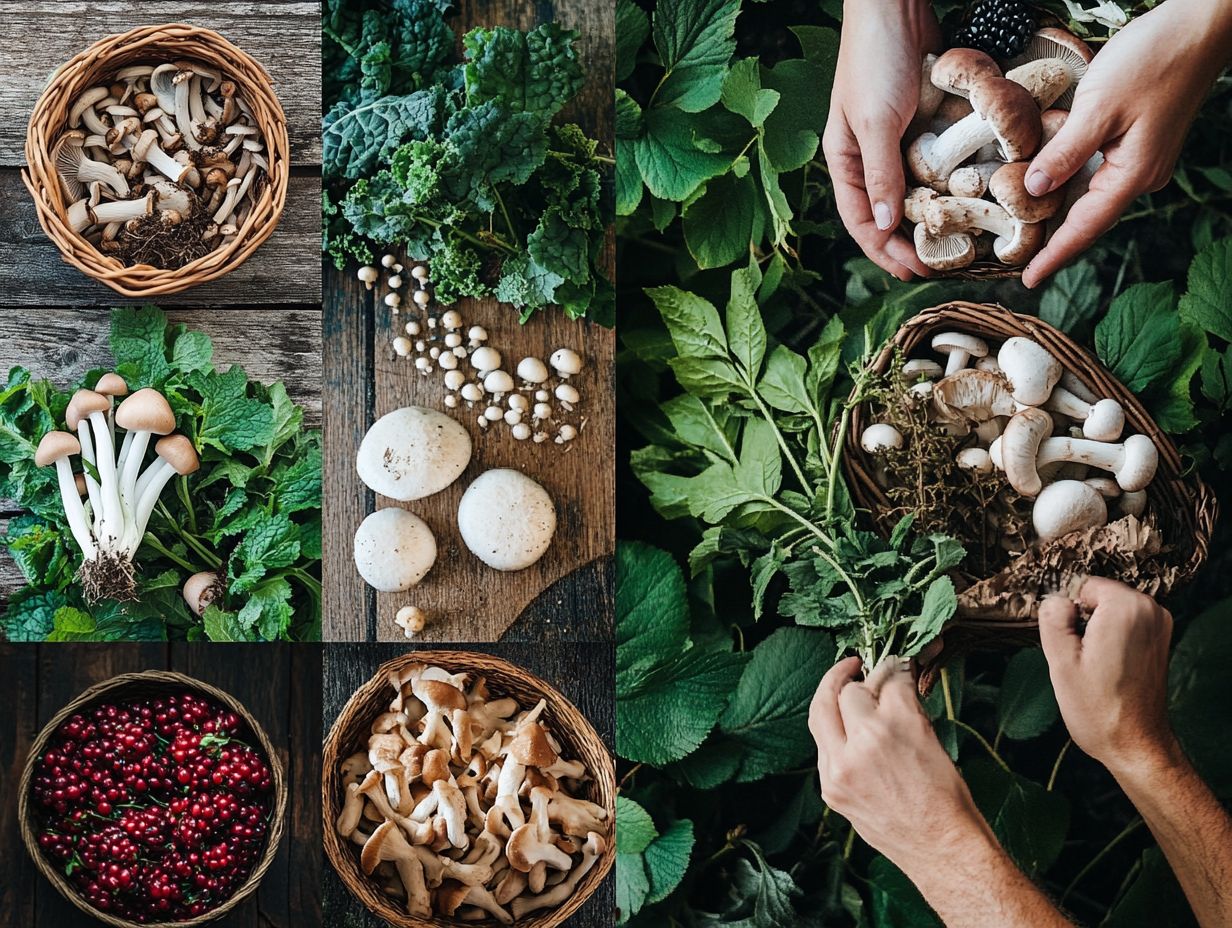
- Join a local foraging group or club to connect with other foragers and learn from experienced herbalists in your community.
- Use apps and websites to identify and locate seasonal foraging spots in your area and discover the benefits of gathering wild plants.
- Visit your local farmers’ market for freshly harvested and locally sourced seasonal foods.
1. Local Foraging Groups and Clubs
Local foraging groups and clubs are invaluable resources for anyone eager to delve into the art of foraging. They provide a vibrant community where you can connect with fellow enthusiasts and explore 10 must-have recipes for summer foraged ingredients in the fascinating world of wild and edible plants.
These groups often host classes and hands-on activities focused on gathering wild plants that elevate your learning experience. You ll deepen your understanding of local flora while honing your essential identification skills.
In many areas, foraging clubs such as the Wild Food Society or nearby botany groups organize seasonal foraging walks, workshops, and even potluck events showcasing wild ingredients. Members share a common passion for uncovering nature s bounty and gain valuable insights from experts on safe foraging practices as well as the medicinal uses of various plants.
These clubs play a vital role in promoting sustainable foraging, emphasizing responsible harvesting and respecting ecosystems. They inspire the use of foraged items, such as roots and herbs, in everyday cooking. Their resources often extend to online forums, informative newsletters, and curated lists of safe plants, ensuring you remain engaged and well-informed within this enriching community dedicated to local resources.
2. Foraging Apps and Websites
In today s digital landscape, foraging apps and websites are your best friends in the foraging journey! They have become essential tools for those like you who want to elevate their foraging adventures and learn more about herbal courses available in your area.
These platforms provide valuable resources for identifying wild plants, such as Black Walnut and Rose, as well as insight into their edible and medicinal uses.
Many of these tools utilize cutting-edge features like image recognition technology, allowing you to upload photos for instant identification of edible plant parts. This creates a more interactive and engaging learning experience. Popular apps like Forager and PlantSnap not only showcase stunning visuals of diverse flora but also incorporate community features where you can share your own experiences, such as recipes and herbal remedies, with fellow enthusiasts.
Websites frequently host in-depth articles, guides, and expert advice on ethical foraging practices, highlighting the importance of sustainability in cultivating a healthy plant community. For more detailed insights, check out the best educational resources for sustainable foraging. Together, these digital resources empower you to explore the wild responsibly, ensuring your foraging endeavors support both biodiversity and conservation efforts.
Get started on your foraging adventure today!
3. Local Farmers’ Markets
Local farmers’ markets are a haven for anyone who loves fresh, seasonal foods. They showcase a splendid array of fresh, edible plants sourced from the local environment, such as berries and acorns, while promoting community engagement.
These markets connect you with local producers. You ll discover new flavors and learn about food preservation techniques.
Supporting local agriculture isn’t just fulfilling it’s essential for a thriving community. It bolsters the economy, champions sustainable practices, and ensures that the community benefits from shared knowledge. Foragers thrive in this setting, where the exchange of knowledge about wild edibles, including herbal courses and the plant lifecycle, enriches your culinary adventures and nurtures a sense of community.
4. Wild Edibles Field Guides
Wild edibles field guides are essential for foragers. They offer a wealth of knowledge on identifying various edible plants, such as roots and herbs, in their natural settings while ensuring safe foraging practices through detailed descriptions and striking photographs.
These guides feature easy identification keys. They help you distinguish between similar-looking plants.
Whether you’re a novice or a seasoned forager, a well-crafted guide empowers you to make informed choices based on safety guidelines. A good guide also highlights specific edible plant parts, such as leaves and flowers, which is essential for safety and culinary enjoyment.
For beginners, try “Edible Wild Plants: Wild Foods from Dirt to Plate” by John Kallas. Experienced foragers may enjoy “Foraging & Feasting: A Field Guide to Identifying Edible Wild Plants” by Dina Falconi, which delves deeper into plant identification and preparation techniques. To enhance your foraging experience, check out the best local resources for foraging edibles, ensuring your adventures are both fruitful and rewarding.
5. Social Media Groups and Pages
Social media groups on foraging are great places to connect. They have blossomed into vibrant platforms where you can share knowledge, experiences, and resources surrounding wild plants, herbalism, and sustainable practices.
In these groups, members share identification tips. This knowledge helps you forage safely and enjoyably.
You might come across personal stories that paint vivid pictures of their escapades in nature, inspiring you to venture out and explore the local flora for yourself.
Join these groups to swap delicious recipes and celebrate the wild bounty together. This interactive setting cultivates a strong sense of community, encouraging you and other avid foragers to learn, collaborate, and deepen your connection with the natural world through shared knowledge of wildcrafting techniques.
6. Community Gardens

Community gardens are essential spaces where you can explore foraging in a well-managed environment, growing different wild plants. Here, you ll cultivate meaningful relationships with wild plants while championing sustainability and local resource sharing, learning about plant lifecycles along the way.
In these collaborative settings, you ll find gardening enthusiasts engaging in hands-on workshops focused on wildcrafting, the practice of gathering wild plants for food or medicinal use, designed to teach you essential foraging skills. These experiences will equip you with the knowledge to expertly identify edible flora and enhance your understanding of the plant lifecycle.
Community gardens often showcase successful initiatives, such as collaborations between local schools and urban farms, which introduce students to the joys of growing their own herbs and vegetables. These experiences empower you and your neighbors to harvest food sustainably, fostering connections among community members and enriching the social fabric of your area while ensuring a continuous cycle of knowledge, wildcrafting, and nourishment.
7. Nature Centers and Parks
Nature centers and parks serve as perfect havens for foraging enthusiasts like you, offering opportunities to immerse yourself in local wild plants and learn about their medicinal uses. These venues provide educational programs that not only highlight these natural treasures but also promote responsible foraging practices to ensure safety guidelines are followed.
At these centers, a variety of engaging activities await you, including guided foraging tours that invite you to explore the natural landscape while honing your skills in identifying various edible plants and fungi, such as roots and herbs. Workshops often teach you practical skills like food preparation and preservation, while enlightening talks dive into the ecological roles of these plants, enriching your understanding of local ecosystems.
Through these invaluable resources, you’ll discover a newfound appreciation for the intricate interconnections within nature and explore sustainable practices that can be embraced, ensuring that your foraging adventures remain both rewarding and eco-friendly through wildcrafting.
8. Cooking Classes and Workshops
Cooking classes and workshops focused on foraging present you with a remarkable opportunity to turn your wild plant discoveries into exquisite meals while exploring the art of food preservation and the culinary potential of nature s offerings, including recipes that utilize medicinal herbs.
These classes are often tailored to different seasons, underscoring the importance of harvesting and using ingredients at their peak freshness, such as berries and greens. You ll have the chance to engage in recipe development that showcases the distinctive flavors of the wild ingredients you’ve gathered, enhancing your culinary skills while nurturing a profound appreciation for the bounty of the natural world.
Get ready to learn exciting techniques for preserving wild foods think drying, fermenting, or pickling ensuring that your experience goes beyond just a single outing. By participating in these hands-on sessions, you not only expand your cooking repertoire but also forge a deeper connection to the land and its natural rhythms, exploring the various edible plants and their medicinal uses.
Don’t miss out on the chance to turn your wild finds into delicious meals!
9. Foraging Tours and Retreats
Foraging tours and retreats offer you an immersive experience to deepen your knowledge of wild plants and foraging techniques, often guided by seasoned herbalists and foraging experts.
These thoughtfully designed programs blend hands-on foraging with educational workshops. You will acquire practical skills while exploring diverse ecosystems. Expect to learn how to identify an array of edible and medicinal plants, such as Dandelion, Nettles, and wild garlic, while cultivating a deeper appreciation for nature’s offerings.
Engaging with expert herbalists gives you valuable insights into sustainable foraging practices and the ecological significance of these plants. Understanding various plant parts fosters a connection to the environment that enhances your overall experience.
By the end of the retreat, you’ll expand your cooking skills and discover the magic of herbal medicine, learning about the medicinal uses of various wild plants.
10. Local Environmental Organizations
Local environmental organizations play a vital role in championing sustainable foraging practices. They offer valuable resources and opportunities to engage with your community while discovering the importance of wild plants in local ecosystems.
Through enlightening workshops and guided foraging trips, these organizations provide education on ethical practices. This helps you forge a deeper connection to nature.
By collaborating closely with local communities, they highlight the importance of preserving plant biodiversity. This gives you the power to appreciate the value of native species.
Many programs include hands-on experiences like wildcrafting, allowing you to responsibly gather wild edibles while understanding their ecological significance. Participating in these initiatives helps you learn sustainable methods and contributes to protecting local habitats.
This ensures that future generations can relish the rich diversity that nature has to offer.
What is Foraging and Why is it Gaining Popularity?
Foraging the art of seeking out and gathering wild plants for culinary and medicinal purposes is experiencing a renaissance as you and many others yearn to reconnect with nature and embrace sustainable living.
You can explore the rich tapestry of edible plants and their medicinal uses in your local surroundings. This revival reminds us of when people relied on nature for food, nurturing a profound relationship with the ecosystem.
In recent years, you may have found yourself drawn to foraging not just for food security, but also for the countless health benefits linked to consuming local, organic produce.
With growing awareness of environmental concerns, many are inspired to minimize their carbon footprint and bolster biodiversity. Herbalism has similarly regained traction as individuals uncover the medicinal properties of wild herbs and plants.
The blossoming of foraging communities often reflects local resources, with workshops and social networks fostering collaboration and shared knowledge. This enriches the experience for both seasoned foragers and newcomers alike.
What Are the Benefits of Foraging for Seasonal Foods?

Foraging for seasonal foods brings a wealth of benefits your way, from enhanced nutrition to a profound connection with nature. Exploring 10 wild herbs for spring foraging provides a unique opportunity to engage with local communities while discovering wild foods that often surpass the flavor and nutritional value of store-bought alternatives.
Imagine the seasonal bounty you can explore vibrant berries, earthy mushrooms all enriching your diet with essential vitamins and minerals. This practice nourishes your body and fosters a sustainable lifestyle, promoting a food cycle that harmonizes with the environment.
When you forage with others, the experience becomes even more enriching. Participants can share tips and techniques, exchanging stories of their wild adventures. This collaboration creates cherished memories and strengthens your sense of belonging and collective purpose.
Foraging transforms into more than just a personal quest for health; it evolves into a celebration of community resilience and a shared appreciation for the beauty of the natural world. Are you ready to explore the flavors of the wild?
Is Foraging Safe and Sustainable?
Safety and sustainability should be at the forefront of your foraging efforts. It’s essential to grasp local regulations, accurately identify wild plants, and adhere to safety guidelines to ensure your foraging practices are environmentally responsible and promote healthy ecosystems.
As you embark on your foraging adventure, familiarize yourself with the plants you might encounter. Recognizing key traits of poisonous plants is crucial, as they can often mimic their edible counterparts. Using field guides or mobile apps can be invaluable in this process. Embracing sustainable practices, like taking only what you need, is crucial for leaving enough for wildlife and future growth.
Equally important is your understanding of local laws, as regulations can vary widely from one region to another. By respecting these boundaries and practices, you contribute to the protection of natural resources while enjoying the bounty of nature.
What Are Some Tips for Beginners?
For those stepping into the realm of foraging, knowledge truly is power. Grasping plant identification, using local resources, and immersing yourself in classes and hands-on activities will significantly elevate your foraging adventures.
To get started, invest your time in reputable field guides and mobile apps. These resources help you recognize plants in your particular region. Additionally, exploring summer edibles can enhance your foraging knowledge. Joining local foraging clubs can also prove invaluable; they create a community of like-minded enthusiasts eager to exchange experiences and tips.
It s crucial to understand basic safety practices. Never consume unidentified plants, and always be aware of potential toxins or pollutants in your foraging area. By prioritizing education through workshops or online courses, you can hone your skills and build the confidence needed to safely gather and savor nature’s bounty.
How Can Foraging Help Connect People with Nature?
Foraging serves as a powerful way for you to connect with nature, fostering a sense of community and a deeper appreciation for wild plants and their vital roles within ecosystems. This experience ultimately enriches your relationship with the environment.
Through the shared adventure of foraging, you not only learn about the diverse plant species thriving in your local surroundings but also cultivate a deeper emotional bond with the land itself. Each wild expedition becomes an exciting journey of discovery, filled with wonders waiting for you to uncover!
The countless stories exchanged during these outings strengthen community ties, allowing you to forge friendships centered around a shared love for nature.
As you gather and utilize these plants, you gain invaluable knowledge about sustainable practices. This gives you the power to become a steward of the natural world, all while experiencing the joy of nourishing both your body and soul.
What Are Some Common Misconceptions About Foraging?
Common misconceptions about foraging often arise from a lack of understanding regarding wild plants, leading to baseless fears about safety, legality, and the complexities of the foraging process. These misconceptions can discourage potential enthusiasts from engaging in this enriching practice.
- Many might assume that foraging is either risky or illegal.
- However, with thorough research and the right guidance, you can safely explore your local ecosystems.
- It’s essential to familiarize yourself with the regulations surrounding foraging in your specific region, as these can vary significantly.
- Knowing which areas allow foraging and identifying the right species to harvest are crucial steps for anyone interested in this sustainable endeavor.
A wealth of educational resources ranging from insightful books on herbalism to engaging workshops can provide valuable knowledge and build your confidence, especially when exploring best practices for safe seasonal foraging, making foraging an accessible and rewarding experience for those eager to learn.
Frequently Asked Questions
1. What are the benefits of seasonal foraging?
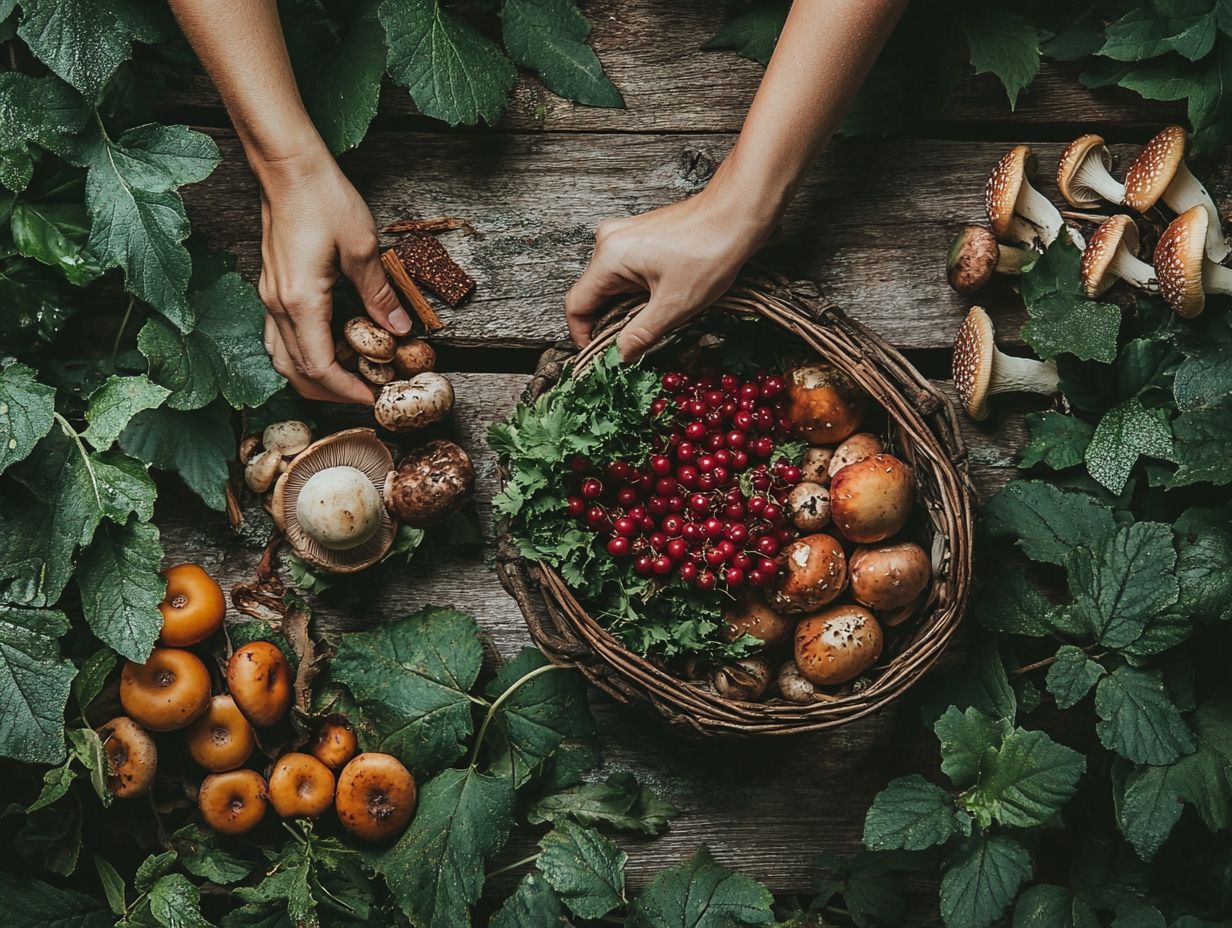
Seasonal foraging allows you to connect with nature, discover new and nutritious foods, and reduce your ecological footprint by sourcing locally. To enhance your experience, consider these 10 tips for successful summer foraging.
2. Where can I find information about foraging laws and regulations?
Ready to explore foraging? Start by checking with your local government or your state’s department of natural resources for any laws or regulations regarding foraging. You can also consult the resources listed below for more information.
3. Are there any safety precautions to keep in mind when foraging?
For a hands-on experience, consider joining local foraging clubs or workshops to learn hands-on. These activities are ideal for those interested in sustainable foraging and understanding the medicinal uses of various plant parts, such as roots, berries, and herbs.
It’s important to properly identify plants and mushrooms before consuming them, as some can be toxic. It is also recommended to wear gloves and use proper tools when foraging.
4. Can I forage in my backyard or do I need to go to a forest or park?
You can definitely forage in your own backyard as long as you have the right plants and resources. However, it is important to avoid foraging in areas that may have been sprayed with pesticides or other chemicals.
5. How can I learn more about foraging?
There are many great resources available to learn more about foraging, including:
- Books
- Online courses
- Workshops
- Foraging clubs
Check out the list below for some great options.
6. What are some good resources for identifying plants and mushrooms?
There are excellent foraging apps, field guides, and online forums specifically for identifying plants and mushrooms. Some of our top recommendations are listed below.


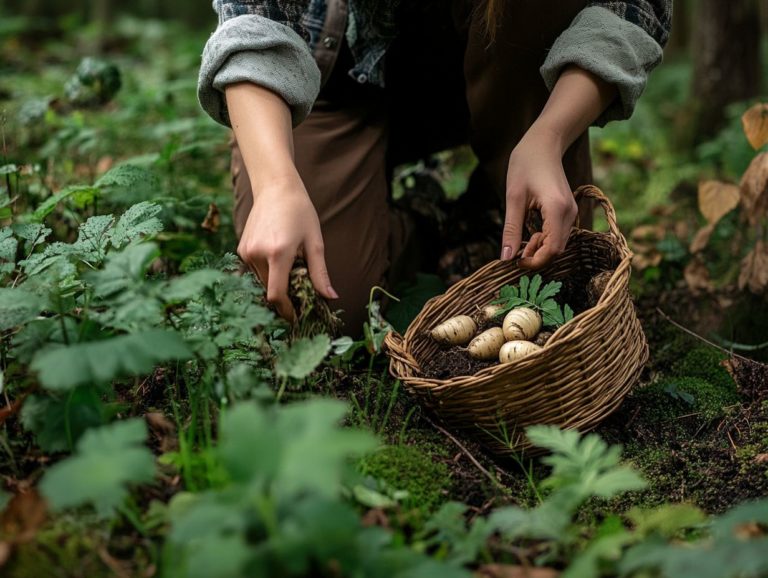

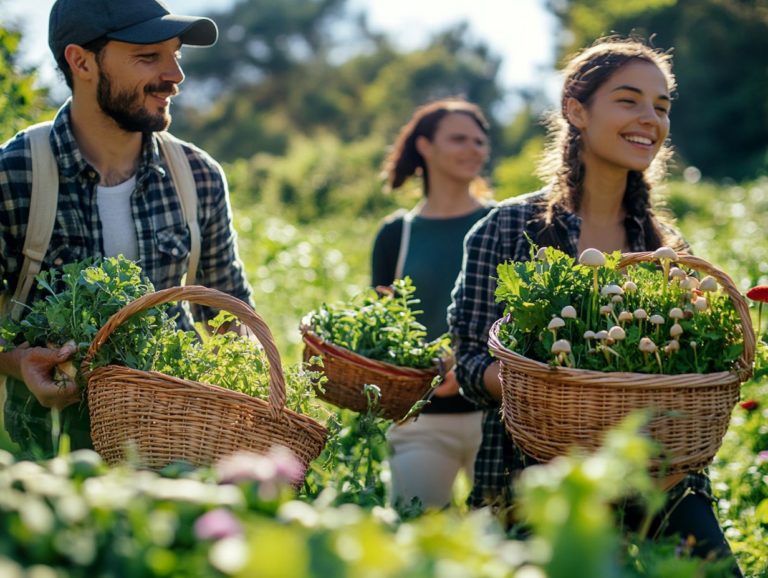
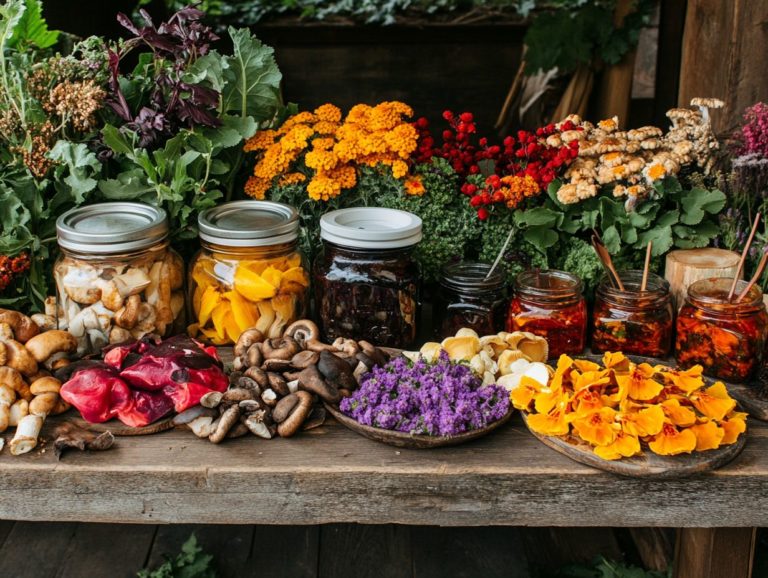
![Guide to Seasonal Foraging in [Your Area]](https://forageadept.com/wp-content/uploads/2024/08/guide-to-seasonal-foraging-in-your-area-jq-768x578.jpeg)